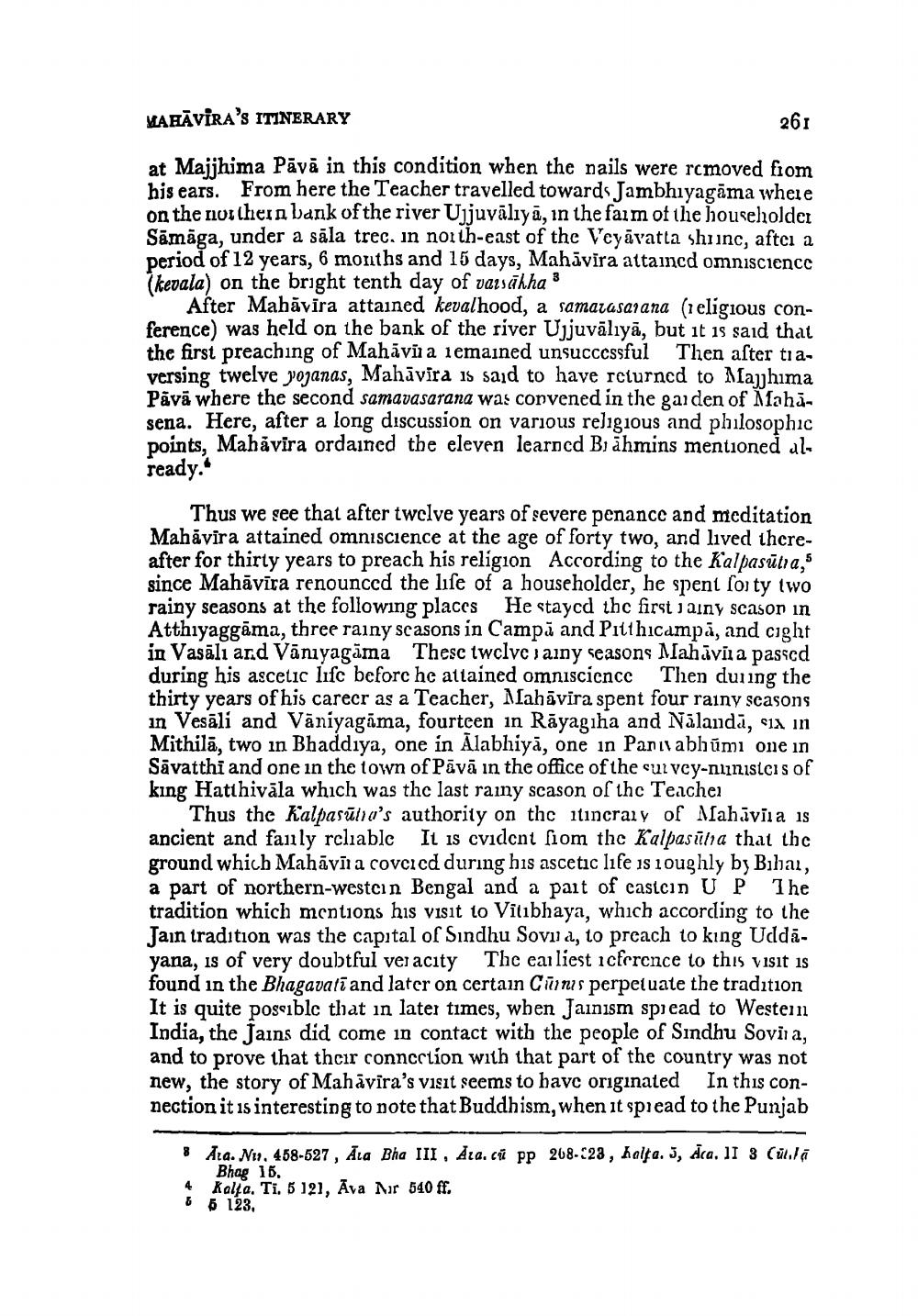________________
MAHAVIRA'S ITINERARY
261
at Majjhima Pāvä in this condition when the nails were rcmoved from his ears. From here the Teacher travelled towards Jambhiyagāma where on the northern bank of the river Ujjuvālıyā, in the faim of the householder Sāmāga, under a sāla trec, in north-east of the Veyāvatta shunc, aftei a period of 12 years, 6 months and 15 days, Mahāvīra attaincd omniscience (kevala) on the bright tenth day of varstākha 3
After Mahāvīra attained kevalhood, a samarasarana (i eligious conference) was held on the bank of the river Ujjuvālıyā, but it is said that the first preaching of Mahāvī a iemained unsuccessful Then after tiaversing twelve yojanas, Mahāvīra is said to have returned to Majjhima Pāvā where the second samavasarana was convened in the garden of Alahā. sena. Here, after a long discussion on various religious and philosophic points, Mahavira ordained the eleven learncd B. āhmins mentioned already.
Thus we see that after twelve years of severe penance and meditation Mahavira attained omniscience at the age of forty two, and lived thereafter for thirty years to preach his religion According to the Kalpasūtra, since Mahāvīra renounced the life of a householder, he spent for ty two rainy seasons at the following places He stayed the first sainy scason in Atthiyaggama, three rainy scasons in Camp and Pitthicampā, and cight in Vasāli and Vāniyagāma These twelve vainy seasons Mahāvila passed during his ascetic life before he attained omniscience Then during the thirty years of his career as a Teacher, Mahavira spent four rainy seasons in Vesāli and Vāniyagama, fourteen in Rāyagiha and Nālandū, six in Mithilā, two in Bhaddiya, one in Alabhiyā, one in Panni abhūmi one in Sāvatthi and one in the town of Pāvā in the office of the curvey-nlinistcis of king Hatthivāla which was the last rainy scason of thc Teachei
Thus the Kalpasūlo's authority on the itincraiy of Alahīviia is ancient and fauly reliablc It is cvidcnt fiom thc Kalpasūhia that the ground which Mahāvīna covcıcd during his ascetic life is roughly by Biliai, a part of northern-westein Bengal and a part of castein UP The tradition which mentions his visit to Vitibhaya, which according to the Jain tradition was the capital of Sindhu Sovila, to preach to king Uddayana, is of very doubtful ve acity The earliest icference to this visit is found in the Bhagavati and later on certain Cūrnis perpetuate the tradition It is quite possible that in later times, when Jainism spead to Western India, the Jains did come in contact with the people of Sindhu Sovira, and to prove that their connection with that part of the country was not new, the story of Mahāvira's visit seems to havc originated In this connection it is interesting to note that Buddhism, when it spread to the Punjab
8 Ara. Nu, 458-527, Ala Bha III , Ara.cú pp 208-23, halta. J, Aca. II 3 Cüila
Bhag 15. 4 Kalta, Ti, 5 121, Āva Mir 540 ff. 5 5 123,




